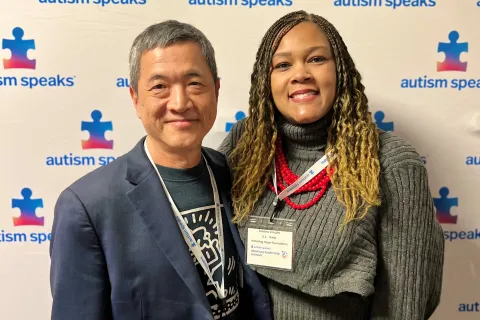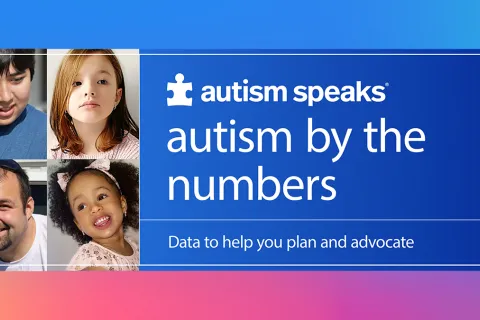What is Discrete Trial Training?
By Dr. Lauren ElderThis answer comes from Lauren Elder, PhD, Autism Speaks assistant director of dissemination science.
What is Discrete Trial Training? Is it the same approach as ABA?
There tends to be a lot of confusion between terms Discrete Trial Training (DTT) and Applied Behavioral Analysis (ABA). Often times when people talk about ABA programs for children with autism, they are actually referring to DTT. DTT is one of several types of teaching strategies that fall under the umbrella of ABA. So let’s tease the two apart.
ABA and DTT
ABA applies the science of “behaviorism,” to bring about meaningful change in an individual’s actions. It looks at behavior as a three step process: the antecedent (a cue or instruction), the behavior and the consequence.
For example, when you’re hungry (antecedent), you eat something (behavior) and then you feel better (consequence). You enjoyed a positive consequence for your behavior, and this increases the likelihood that you’ll again eat when hungry in the future!
ABA applies this principle as an intervention to produce positive changes in behavior. Beyond the field of autism, it’s widely used to help individuals develop positive behaviors – such as good study habits. It’s also used to help those struggling with problem behaviors such as drug addiction.
In fact, most parents use a form of “ABA” on a daily basis, for example, by giving a child a “time out” for hitting or putting on a favorite movie after a child finishes his homework. Rewards and consequences can make a behavior more or less likely to happen again in the future. This relationship between the antecedent, behavior and consequence is what ABA is all about.
How is Discrete Trial Training different?
DTT is a structured ABA technique that breaks down skills into small, “discrete” components. Systematically, the trainer teaches these skills one by one. Along the way, trainers use tangible reinforcements for desired behavior. For a child, this might include a candy or small toy.
For example, a trainer teaching colors to a child might begin by teaching red. She would ask the child to point to red and then reward the behavior. She would then move on to teaching yellow by itself, reinforce that skill, and then ask about both colors. After the child learns all his colors, the trainer might teach the child to say each color’s name.
Many therapists have found DTT to be particularly effective for teaching skills to children with autism. DTT was one of the very first interventions developed for autism and has extensive research supporting it.
Are there types of ABA that are effective for autism in addition to DTT?
Yes! Many of the effective early intervention approaches for autism are based on ABA principles, including the Early Start Denver Model (ESDM) and Pivotal Response Treatment (PRT). These are delivered in a more natural and less structured way than DDT. PRT is highly focused on whatever motivates the child. In PRT, for example, a child who is enjoying playing with a car and ramp might be asked to indicate a red versus blue car and then given the red car to roll down the ramp when he correctly points to it. ESDM similarly uses a natural environment but teaches multiple skills at once. So while teaching red, you may also be teaching turn-taking and other social skills.
All these types of ABA types of teaching include an instruction (antecedent), a response from the child (behavior), and a reward (consequence). The difference comes primarily in what types of rewards are used, and whether instructors use a highly structured format or use play and natural routines.
Related articles and resources
- Applied Behavior Analysis (ABA)
- Questions and answers about ABA
- Questions to ask an ABA therapist
- ATN/AIR-P Parent's Guide to Applied Behavior Analysis
- Read more on specific behavior interventions
- Contact the Autism Response Team
Editor’s note: Autism Speaks continues to fund research on both the effectiveness of established behavioral interventions and the development of more effective interventions. You can explore these and other Autism Speaks research grants using this website’s Grant Search.









